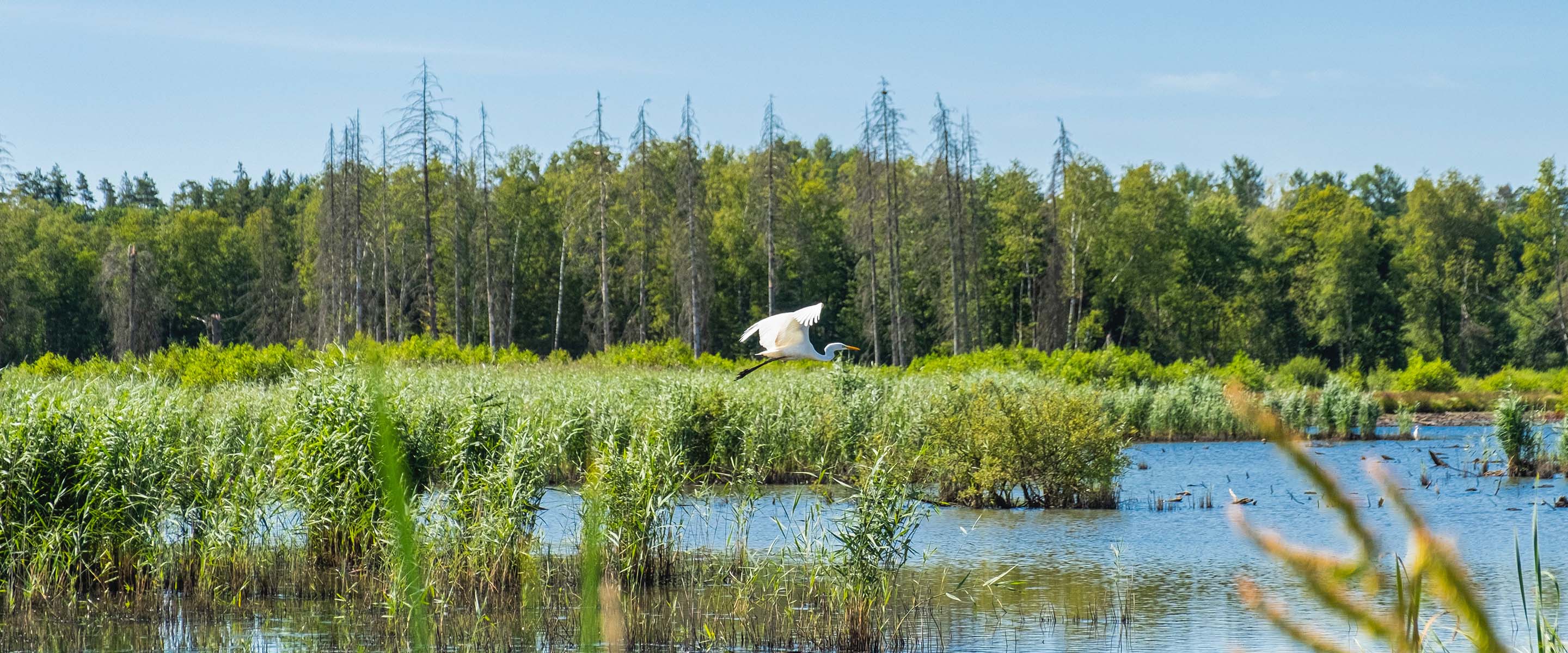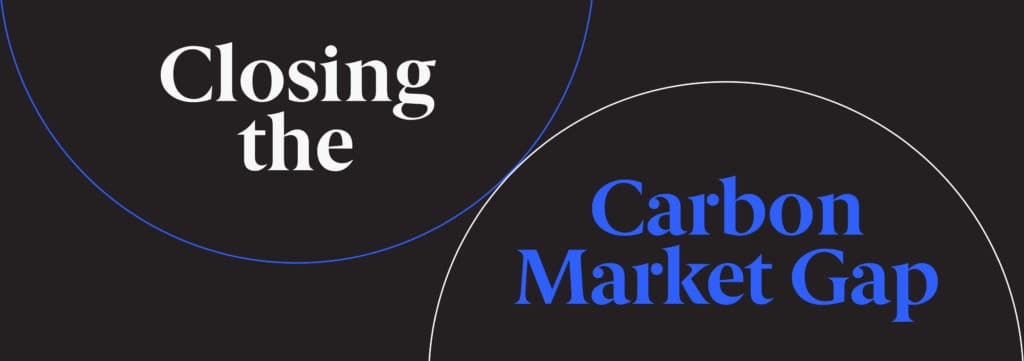Biodiversity’s Role In Sustainability


Closing the Carbon Market Gap
According to Bank of America, carbon offset supply may need to grow as much as 50x by 2050 to achieve net-zero emissions. Watch the replay as three experts discuss efforts to close this gap and the challenges in developing projects and issuing credits at scale.
A primer on biodiversity, including its connection to sustainability, and why it matters for your business.
More than six months have passed since the United Nations’ (UN’s) Biodiversity Conference (COP 15) summit in Montreal (December 2022), where halting biodiversity loss became an official business case as critical as decarbonization. In 2022 alone, the world lost 11 soccer fields of tropical forest per minute. That’s an area the size of Switzerland, and marks a 10% increase of tropical forest loss in comparison to 2021. Without urgent action, the targets set by COP 15 to prevent further wildlife decline by 2030 could soon be slipping out of reach. So, what role should businesses play to contribute to collective action? The answer is one that is vital. Alongside the ethical obligation, there is a strategic imperative on businesses to reverse biodiversity loss and ensure long-term resilience. As momentum builds in the financial and regulatory world, the organizations that act now will be the best placed to attract investments, identify opportunities to mitigate supply chain shocks, and prepare for upcoming environmental, social and governance (ESG) regulations.
In this practical guide, we’ll break down the steps that you can take to:
- Understand the threats to biodiversity and their business implications
- Align with the United Nations’ Sustainable Development Goals (SDGs)
- Inform ESG disclosures, such as reporting on biodiversity to the CDP (formerly the Carbon Disclosure Project)
- Take the lead in biodiversity conservation
What is Biodiversity?
Biodiversity, or biological diversity, in essence, is the variety of life on Earth. According to the UN Convention on Biodiversity, “this includes diversity within species, between species and of ecosystems.” It’s the unique genetic composition within each organism, the variety of species from gorillas to lobsters, and the diversity of ecosystems, each with its unique mix of species and environment. Each ecosystem needs a diversity of life and sufficient habitat area to function optimally. Disruptions can lead to unpredictable changes and potentially cause ecosystem collapse. Yet, ecosystems rich in biodiversity are more resilient and adaptable. Healthy, functioning ecosystems provide numerous services, including clean air and water, food, medicines, and carbon storage, as well as materials for various products. Biodiversity is integral to our daily lives. However, biodiversity is rapidly declining, with a 69% decrease in global populations of various species since 1970 and over a million species threatened with extinction.
The Impact of Biodiversity Loss
The World Economic Forum (WEF) identified biodiversity loss as the fourth-great global risk to human life—after infectious disease, climate action failure, and weapons of mass destruction. What’s more, according to an analysis by Swiss Re Institute, one-fifth of the world’s countries are now at risk of ecosystem collapse, which could set off a chain reaction to fundamentally and irreversibly change our environment.
In financial terms, this loss is costing the global economy more than $5 trillion a year. A recent study by the WEF and PwC found that more than half of the world’s gross domestic product (GDP), $58 trillion, is moderately or highly reliant on nature and its services. In short, if nature collapses, instability and the economy soon follow.
How Businesses Contribute to Biodiversity Loss
Business activities, especially those related to resource extraction or cultivation, can contribute to biodiversity loss in one or many ways. Here are a few examples:
- Deforestation: The production of timber, certain fibers, such as cotton and viscose, crops, or animal products often involves the clearing of forests. This both reduces carbon sequestration and disrupts or destroys the local ecosystem—a process that can take centuries to restore.
- Chemical pollution: Any chemical-intensive process, such as dying, printing, or finishing a textile, may also involve the disposal of hazardous chemicals and untreated wastewater into nearby water bodies, causing harm to aquatic life and the surrounding communities (often, those of the local factory workers).
- Overexploitation of resources: The increasing demand for natural materials like fibers or food fuels unsustainable farming or fishing practices and exploitation of resources, resulting in the depletion of populations and disruption of ecosystems.
Some of the above resources are replaceable. Others are irreplaceable. And in lieu of government policy and action, in many cases, it falls on the business owner to mitigate their impact on the environment by implementing sustainable practices and selecting suppliers that do the same.
Below, you can see a summary of how the operations of four major value chains—food, energy, infrastructure, and fashion—currently drive more than 90% of man-made pressure on biodiversity, and their business impact.
Examples of ways that business activities contribute to the pressures driving biodiversity loss.
| Industry | Business Activities | Threats | Business Impact |
| Food | Soil health degradation, waterway pollution, and ecosystem harm leading to habit destruction and loss of biodiversity | Habitat fragmentation, disruption of migratory patterns, and spread of invasive species | Increased costs due to environmental regulations, reputational damage, potential loss of natural resources for future production |
| Overfishing and aquaculture | Depleted fish populations and disrupted marine life, the escape of non-native species, release of excess nutrients | Reduced fish stocks, increased costs for fishing operations, loss of livelihoods | |
| Food supply chains and expanding transportation networks | Habitat destruction, soil erosion, water pollution, and disruption of ecosystems. Deforestation and land clearing for infrastructure, such as pipelines and power plants, further exacerbate biodiversity loss | Supply chain shocks, increased transportation costs, lower profit margins, vulnerability to changes in environmental regulations | |
| Energy | Fossil fuel extraction, such as coal, oil and natural gas (often including mining, drilling, and fracking) | Potential conflicts with local communities, regulatory challenges related to environmental assessments, and reputational risks associated with negative ecological impacts | Legal and regulatory challenges, increased costs for environmental mitigation measures, and reputational damage |
| Greenhouse Gas Emissions (GHGs) | Climate change, disruption of migration patterns, and increase in the frequency and intensity of extreme weather events | Physical risks to infrastructure, potential disruptions in energy supply chains, increased insurance costs, and regulatory pressure to reduce emissions | |
| Renewable energy infrastructure (wind, solar and hydropower) | Loss of native vegetation, fragmentation of ecosystems, and disruption of wildlife corridors | Potential conflicts with local communities, regulatory challenges related to environmental assessments and reputational risks associated with negative ecological impacts | |
| Infrastructure | Infrastructure projects often require land clearing and habitat destruction | Altered natural water flow, degradation of water quality, disruption of fish migration, and impact on riparian (river bank) habitats | Potential delays and increased costs due to environmental assessments, legal challenges, and reputational risks associated with negative ecological impacts |
| Water management and dam construction | Construction of ports, marinas, coastal defenses, and offshore structures can disturb marine and coastal ecosystems. This might include damaged seafloors, coastal vegetation, and disruption to marine species’ migratory patterns | Potential conflicts with local communities and indigeneous peoples, increased regulatory scrutiny, and the need for environmental mitigation measures | |
| Coastal development and marine infrastructure (dredging, land reclamation, installation of underwater infrastructure) | Potential conflicts with environmental groups, increased regulatory requirements, and reputational risks | Textile waste, product overproduction, and short product lifecycles contribute to landfill pollution and the release of harmful substances into the environment | |
| Fashion | Raw material production | Production of raw materials, such as cotton, leather and synthetic fibers, combined with intensive farming practices can contaminate soil and water | Potential reputational damage, increased costs due to sustainability regulations, and supply chain disruptions due to resource scarcity |
| Chemical use and pollution | Dyes, finishes and treatments may involve discharging hazardous chemicals into waterways that pollute ecosystems, harm aquatic life and contribute to biodiversity loss | Potential legal consequences for non-compliance, increased costs for pollution control measures, and reputation risks | |
| Waste generation | Textile waste, product overproduction and short product lifecycles contribute to landfill pollution and the release of harmful substances into the environment | Potential regulatory pressures to address waste management, increased costs for waste disposal, and reputational risks |

FW Sustainability Report
Learn more about how Fierce Whiskers has made sustainable choices every step of the way by downloading its full sustainability report.
Skip the RFP—CarbonBetter can help
CarbonBetter Certified Offset Portfolios allow carbon buyers to participate in a variety of projects, geographies, and technologies in one simple transaction rather than navigating a lengthy and complex RFP process with multiple carbon market participants.
Learn More about CBCO 22-1Biodiversity, SDGs and Business Sustainability
The UN Sustainable Development Goals (SDGs) started as a call to action for governments, and have since become relevant for businesses worldwide. SDGs provide a global framework to help organizations address various social, economic and environmental challenges by 2030, with 17 unique goals including renewable energy adoption (SDG 7: Affordable and Clean Energy), reducing carbon emissions (SDG 13: Climate Action) and biodiversity protection (SDG 15: Biodiversity). As more and more US businesses incorporate SDG reporting into their sustainability disclosures and corporate reporting stakeholders, they are including information about their contributions to specific SDGs, progress made and targets set.
The Role of Businesses in Protecting Biodiversity
As stark as the biodiversity crisis is, not all is lost. For every way that a business might currently be contributing to biodiversity loss, there is a way to minimize the impact on or make efforts to restore biodiversity loss. This is by no means a catch-all list of initiatives, but is intended to give a starting point of steps that you can take to make an impact.
- Identify the ways in which your current business operations impact biodiversity, both directly and across your supply chain and consider disclosing biodiversity impacts through CDP and/or your annual sustainability report.
- Apply the Taskforce on Nature-related Financial Disclosures (TNFD) framework to evaluate and manage nature-related risks.
- Consider sustainable sourcing. If using materials as product inputs, look for those from sustainable and certified sources, such as certified organic cotton.
- Implement circular economy approaches where possible. These might include recycling schemes, upcycling and extended producer responsibility, to help your organization and customers reduce resource consumption and waste generation.
- Adopt best-in-class chemical management processes, if relevant. Ensure that any dyes are non-toxic, implement efficient wastewater treatment systems and promote responsible chemical handling and disposal throughout the supply chain.
- Adopt transparency. Working closely with your brands, suppliers, NGOs and local communities is vital to identify and address biodiversity risks collectively.
- Set smart, attainable, measurable and timebound (SMART) targets in your internal and external ESG disclosures. This will help avoid the risk of inadvertent greenwashing.
- Explore nature-based solutions for direct impacts at your facilities, which might include green roofs, rain gardens or constructed wetlands.
- Invest in carbon credits with biodiversity co-benefits or that meet Climate, Community and Biodiversity Standards (CCB Standards). This enables you to focus on ‘nature-positive’ strategies through investing in certain projects while participating in the voluntary carbon market.
- Invest in biodiversity restoration. Support conservation projects, reforestation initiatives and biodiversity restoration programs. This might include partnering with organizations working on habitat protection, species conservation or land use programs.
Biodiversity Spotlight: AstraZeneca
Just last month (28 June 2023), the global biopharmaceutical company AstraZeneca announced a $400 million investment in its global AZ Forest Program. Their initiative is to plant 100,000 trees (including more than 300 tree species) and restore more than 100 kilometers (km) of riverside woodlands across the United States, Australia, Indonesia, Ghana, the United Kingdom (UK) and France. What’s more, AstraZeneca is on track to reduce GHGs from its operations and fleet by 98% by 2026 and halve its entire value chain footprint by 2030, on the path to a 90% absolute emissions reduction and science-backed net-zero targets by 2045.
How CarbonBetter Can Help You Understand Your Impact on Biodiversity
While climate change has been at the top of the global business agenda for years, biodiversity loss has only recently come into view. At CarbonBetter, we help organizations apply an informed and strategic approach to biodiversity reporting and activities.
We help you to:
- Quantify impact: We help you to understand your current impact on biodiversity across your entire value chain and measure your carbon footprint.
- Create disclosures: We can help you to set targets and establish systems to measure and report progress towards those targets.
- Navigate the carbon market: CarbonBetter can help you source high-quality carbon offsets and purchase same-day credits from our Certified Offset (CBCO) Portfolios. These provide instant access to hand-selected and vetted carbon credits from multiple projects in one simple transaction.
- Build a foundation for success: Get the expertise and guidance you need to drive your sustainability journey with transparency and make an impact.
Conclusion
Halting biodiversity loss and promoting and investing in ecosystem restoration is both an ethical obligation and strategic imperative for businesses, and it requires unified action ahead of concrete regulation. If you need guidance on selecting verified carbon credits, reporting in alignment with the SDGs or quantifying the impact of your business activities on the environment, we can help. Contact us today to learn more.
Biodiversity refers to the variety of life on Earth, including the diversity within species, between species, and of ecosystems. It's important for businesses because healthy, functioning ecosystems provide numerous services, including clean air and water, food, medicines, and carbon storage. Biodiversity loss can lead to ecosystem collapse, which can have significant economic implications.
Biodiversity loss is costing the global economy more than $5 trillion a year. More than half of the world’s gross domestic product (GDP) is moderately or highly reliant on nature and its services. If nature collapses, economic instability follows.
Business activities, especially those related to resource extraction or cultivation, can contribute to biodiversity loss in various ways, such as deforestation, chemical pollution, and overexploitation of resources.
The UN SDGs provide a global framework to help organizations address various social, economic, and environmental challenges by 2030. They have become relevant for businesses worldwide, and many are incorporating SDG reporting into their sustainability disclosures and corporate reporting.
Businesses can help protect biodiversity by identifying their impact on biodiversity, applying the Taskforce on Nature-related Financial Disclosures (TNFD) framework, considering sustainable sourcing, implementing circular economy approaches, adopting best-in-class chemical management processes, setting SMART targets in ESG disclosures, exploring nature-based solutions, investing in carbon credits with biodiversity co-benefits, and investing in biodiversity restoration.

About the Author
Pankaj Tanwar is Managing Director of Climate Services at CarbonBetter. He has experience leading Fortune 100 companies through their sustainability journeys, including sustainability driven growth in the food industry. Pankaj holds an MBA from Northwestern University’s Kellogg School of Management and a BTech in Mechanical Engineering from the Indian Institute of Technology, Kanpur.


